Today, everyone knows about dinosaurs, but 200 years ago, people did not know that there were species like dinosaurs in prehistory, let alone that during the Mesozoic Era, 245 million years ago, dinosaurs dominated the earth for 180 million years. . Interestingly, the discoverer of the dinosaur was not a paleontologist, but a country doctor named Gideon Mantel in a small town in Sussex, southeastern England. He has a strong interest in geology and paleontology. After treating patients, he often takes his wife Mary to collect fossils outside the city, and he never tires of it and is fascinated by it.
One day in the spring of 1822, he and his wife went to see a doctor in the most fashionable carriage at the time. While Mantell consulted patients at their homes, Mary took a walk on a country road—one of the most rewarding walks in the history of science. At that time, a lot of gravel piled on the side of the road to be used to repair the road immediately caught Mary's attention. She concentrated on searching among the gravel piles, and suddenly saw a sparkling stone. When she curiously picked up the stone, she had no idea how important this action was.

This unusual stone contains a huge fossilized tooth. Mantel felt like a treasure after seeing this fossil. He inquired that the gravel on the roadside was transported from a quarry, so he rushed there immediately and found several more tooth fossils. He was convinced it was the tooth of an ancient animal because the quarry was located in the lower Cretaceous period.
But what kind of ancient animal is this? Mantel consulted the paleontological authority of the time, the Frenchman Georges Cuvert (1769-1832) and British paleontologists. Their answer was: "Although I don't know what animal it is, it seems to be a mammal." Animal teeth.”
Unsatisfied with this answer, Mantel came to London's famous paleontological museum, the Handanian Museum, and was allowed to take the tooth fossil into the warehouse where the museum's specimens are collected. Although Mantel searched repeatedly, he still couldn't find any teeth similar to this one. Mantel was resting in the museum and looked depressed. At this time, a young man chatted with him. When he learned that Mantel came to the museum to identify teeth, the young man told him: "These are iguana teeth. Because. I have been engaged in iguana research in South America, and I am definitely not wrong." So Mantel returned to the warehouse again to investigate the iguana's teeth. As the young man said, the fossil on his hand was very similar to the iguana's teeth, except that The tooth in his hand is much bigger than it is. Based on this, Mantel deduced that the tooth fossil belonged to some unknown giant herbivorous reptile in ancient times. He named the animal Iguanasaurus, which means an animal with teeth like a large lizard, now translated as "Iguanodon" in Chinese.
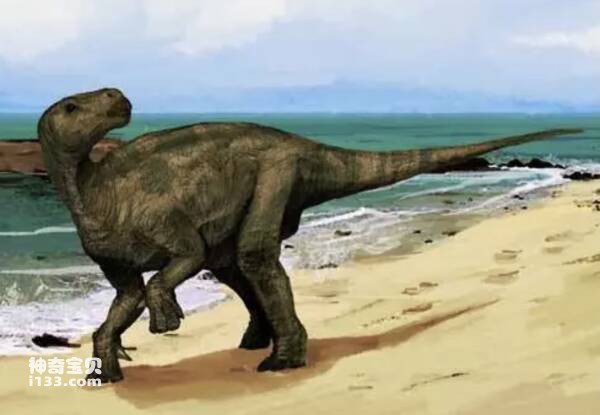
Decades later, the famous British biologist Owen further concluded that these fossil reptiles should not be classified with today's reptiles. They are neither ancient crocodiles nor ancient lizards, but species that have long been extinct from the earth. Unique reptiles - dinosaurs.
Since then, Mantel gave up his job as a doctor and became passionate about finding dinosaur fossils. He put the dinosaur bones he collected in his home, and his home became a hospital and museum.
The year before his death, in 1851, the First World's Fair was held in London. The tooth fossils of Iguanasaurus excavated by Mantel were exhibited at the exhibition, as well as the models of Iguanodon and Herrerasaurus restored on this basis. , very popular. For Mantel in his later years, nothing could have pleased him more.
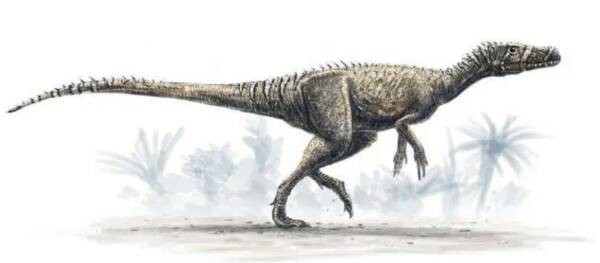
Discovery after discovery
In 1878, miners discovered the graveyard of Iguanodon at a depth of about 300 meters in the Bernisal coal mine in Belgium, which once again set off an upsurge of attention to dinosaurs. At first, only incomplete dinosaur fossils were discovered, and soon 39 complete skeleton fossils were discovered. It turned out that that area was a swamp. The iguanodons on the mountain fell into the swamp, and that became their graveyard. Ten of the Iguanodon fossils are now on display at the Royal Museum of Nature in Brussels, the capital of Belgium. In the glass-lined room, the 10 ceiling-high Iguanodon skeleton fossils become a beautiful sight.
At the same time, dinosaur craze also started in the United States. With the funding of the Morgan Consortium and the Steel King, many dinosaurs and other biological fossils were dug up, which are now displayed in the Museum of Natural History in New York and the Museum of Pittsburgh. Among the dinosaur fossils discovered, the largest is the herbivorous dinosaur - Apatosaurus, which is about 20 meters long and weighs about 25 tons. Other discoveries are also very interesting. The caves where ancient Indians lived in Wyoming had large pillars, one of which was unusual. It is said that the Indians suspected it of being a god and often talked to it. After investigation by the staff of the New York Museum of Natural History, the truth was revealed. It turned out to be the fossil of an Apatosaurus foot. This interesting incident also became the beginning of Apatosaurus research.
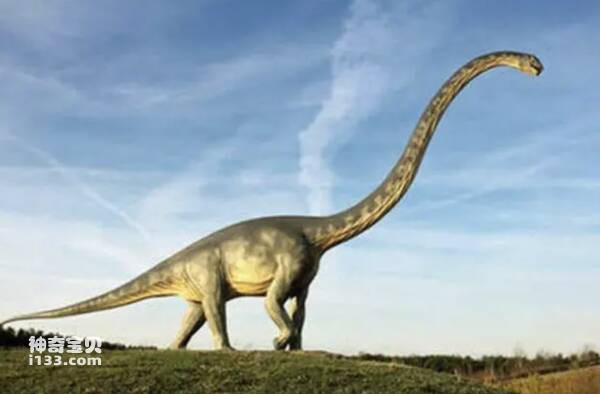
Furthermore, tracks of a pterosaur, a carnivorous dinosaur chasing Apatosaurus, were discovered in the town of Glen Rose, southwest of Dallas, Texas. At that time, this area seemed to be a wetland, and the fossilized footprint was moved intact to the New York Museum of Natural History and used as a base for display.
In addition, Henry Osborne, the fourth director of the New York Museum of Natural History, discovered dinosaur eggs, which also provided future generations with a new field of inquiry. In 1922, inspired by the discovery of Peking Man, he also wanted to go to Asia to search for fossils, so he formed an expedition team led by Louis Andrews and composed of Osborne and others to explore the Mongolian desert. After a period of investigation, before retreating in the winter, Osborne suddenly discovered a stone that looked very much like a dinosaur egg under a cliff. But because everyone had no intention of lingering, they evacuated in a hurry.
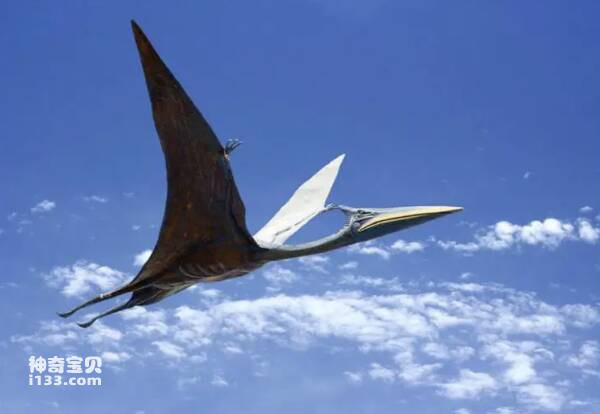
In the warm spring of the following year, Osborne came to the scene again. He first went to the Gobi. Although it was impossible to identify the place where the eggs were found last year due to changes in terrain, he still determined the general location, so he began to search this area. After several days, the work made no progress. One day after dinner, they unexpectedly discovered dinosaur egg fossils. In those days, they found a total of 25 dinosaur egg fossils arranged in a spiral shape. It seemed that the dinosaur mother was laying eggs while walking. It was later identified that it was a Protoceratops dinosaur egg from the late Cretaceous period (about 97 to 65 million years ago).
It is incredible that these eggs have been preserved without cracking for tens of millions of years. We know that in Mongolia, the summers are slightly hot but the winters are cold. Is this why the eggs did not crack and freeze?
Dinosaur fossils tell story of continental drift
The mammal reptiles of the early Triassic period (about 245 million to 241 million years ago) included Lystrosaurus, which was about 1 meter long. Since the second half of the 1960s, its fossils have been discovered in the Antarctic region and attracted people's attention. According to the theory of continental drift proposed by German meteorologist Wegener around 1910, about 150 million years ago, the continents on the earth were gathered together to form "Pangaea", and then the continents drifted again. to where we are now.
Low temperatures lead to extinction
During the transition period between the Mesozoic Era and the Cenozoic Era about 65 million years ago, the disappearance of dinosaurs and their kind provided an opportunity for the final appearance of mammals and humans. Regarding the issue of the extinction of dinosaurs, there are still various hypotheses, but there is no conclusion yet. One is the "gradual extinction theory" and the other is the "extinction theory". But in any case, the reason for the extinction of dinosaurs must be related to changes in the environment. The representative causes of the "gradual extinction theory" and the "extinction theory" are the "temperature drop theory" and the "meteorite impact theory" respectively.
During the Mesozoic Era, the earth experienced a rare warm period with almost no ice and snow coverage. At that time, global temperatures were 8°C to 10°C higher than today. However, from the end of the Mesozoic Era to the beginning of the Cenozoic Era, large glaciers cooled the ocean currents and atmospheric circulation. The temperature of the entire earth dropped. The glaciers locked water and the sea level also dropped. The original rich vegetation was destroyed and could not satisfy the needs of the dinosaurs. The need for survival drove the dinosaurs toward extinction. There have been many glacial periods in the history of the earth, but the time and evidence for the occurrence of glacial periods before the Sinian are currently unclear. More recently, the fifth glacial period occurred on earth about 2 million years ago, and the sixth glacial period occurred about 60,000 to 10,000 years ago. The lowest temperature during this glacial period was about 18,000 years ago. The temperature at that time was 5℃~10℃ lower than now.
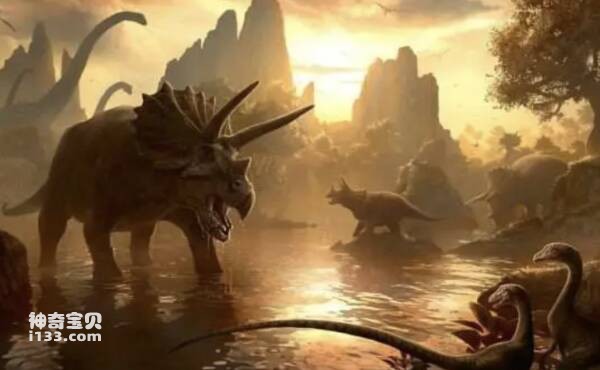
In the past, dinosaurs were cold-blooded animals like snakes. When winter gets colder, the activities of snakes will weaken, so it is understandable that they will become extinct. However, recent anatomical evidence from dinosaur fossils shows that dinosaur bones contain a "Haversian canal" structure. This structure is located in the center of each bone unit that makes up a long bone. It contains abundant blood vessels. The complex pipeline system is responsible for transporting bone metabolism. necessary substances. The dense Haversian canals indicate adequate blood supply to the body, reflecting the animal's high metabolic function, which is characteristic of the bones of warm-blooded animals. Scientists speculate based on this that dinosaurs are most likely not cold-blooded animals and can stably control their own body temperature. This structure makes the argument that the temperature drop that caused the extinction of the dinosaurs unconvincing.
Of course, this alone is not sufficient to say that dinosaurs are warm-blooded animals, because the metabolism of dinosaurs is so slow that they cannot reach a satisfactory body temperature no matter what. Further research results show that Haversian ducts are not unique to warm-blooded animals. They are formed because animals exercise a lot, which accelerates metabolism. Dinosaurs having a Haversian duct system only shows that they are very active in life and can take the initiative. Increase metabolic rate.
In this regard, American paleontologists have proposed a new hypothesis called "thermal inertia." The so-called thermal inertia is the body's ability to conduct and store heat. This heat can come from metabolism or the movement process of animals. It is different from the way warm-blooded animals maintain body temperature, but it has the same purpose. The process of thermal inertia is to reduce heat loss by having a huge body size, allowing animals to maintain a higher body temperature. Large animals generally have this mechanism because they have a lower ratio of body surface area to body volume than smaller animals. For example, an elephant loses heat much more slowly than a mouse.
This clearly shows that, at least in that era, dinosaurs also used their own methods to achieve successful adaptation in an ecological sense. And warm-blooded dinosaurs had a greater survival advantage, that is, they did not have to consume a lot of energy to generate metabolic heat to maintain body temperature. In other words, if we used thermal inertia to maintain body temperature like these giant animals, we could save a lot of money on food. Obviously, the theory of gradual extinction cannot explain why dinosaurs with survival advantages went extinct.
Huge meteorite hits Earth
Now we turn to the meteorite impact theory, which represents the excitation theory. In 1980, Luis Alvarez of the University of California, Berkeley, pointed out in his paper that the iridium content found in the boundary layer between the Mesozoic and Cenozoic strata in Italy, Denmark, New Zealand and other places was 100 times that of the upper and lower layers. Iridium is a platinum group element and is not commonly found in the earth's crust. The reason why there is a large amount of iridium in the boundary layer is mainly caused by the collision of huge meteorites with the earth. The evidence is that the iridium isotope ratio in the junction layer exactly matches the iridium isotope ratio in the meteorite. Later, iridium-rich junction layers were found all over the world. It is now known that according to the unit mass of meteoritesThe amount of iridium contained in it can be calculated to be about 10 kilometers in diameter of the meteorite that hit the earth at that time. It is believed that the impact of huge meteorites on the earth caused the extinction of dinosaurs and other ancient creatures.
The speed of meteorites hitting the earth is usually 20 kilometers per second. If a meteorite with a diameter of 10 kilometers hits the earth at this speed, it can create a crater about 100 kilometers in diameter and 30 kilometers deep. What we see now is the Chiclaurube crater on the Yucatan Peninsula in Mexico. When that violent impact occurred, forest fires broke out around the world, resulting in flying dust with a total mass of about twice that of meteorites. Particles with a diameter of less than 1 micron remained in the atmosphere for a long time, forming an airtight barrier. , the entire earth was immersed in darkness in the following weeks or even months, and even the oceans were almost completely "silent". As a result, plants on the ground died and plankton in the oceans were unable to perform photosynthesis, resulting in the interruption of the primary food chain. , the dinosaur family all over the world also embarked on the road of no return.
However, some experts believe that there are many doubts about this "cosmic killer theory". From what they have learned, even if they encounter an unexpected severe cold, the dinosaurs living in Alaska can still remain calm. Therefore, some experts believe that the important reason for the extinction of dinosaurs around the world is more likely to be the abnormal movements of air and ocean currents caused by climate change.
Of course, there is also the so-called "bacterial threat" theory as to the reason for the extinction of dinosaurs. Scientists have discovered that a dinosaur called Allosaurus, an animal similar to Tyrannosaurus rex, has unique damage marks on its bone fossils, which are caused by viral infection. As long as they are animals, they are likely to be threatened by germs, and dinosaurs are obviously no exception.
Dinosaurs have become extinct. Although the reason has not yet been determined, we believe that there will be a clear statement in the future that the dinosaurs will "die clearly."
animal tags:
We created this article in conjunction with AI technology, then made sure it was fact-checked and edited by a Animals Top editor.